A Collaboration with Special Olympics BC: Improving Community-Based Physical Activity Programs for Children with Neurodevelopmental Disabilities
August 8, 2019 | News
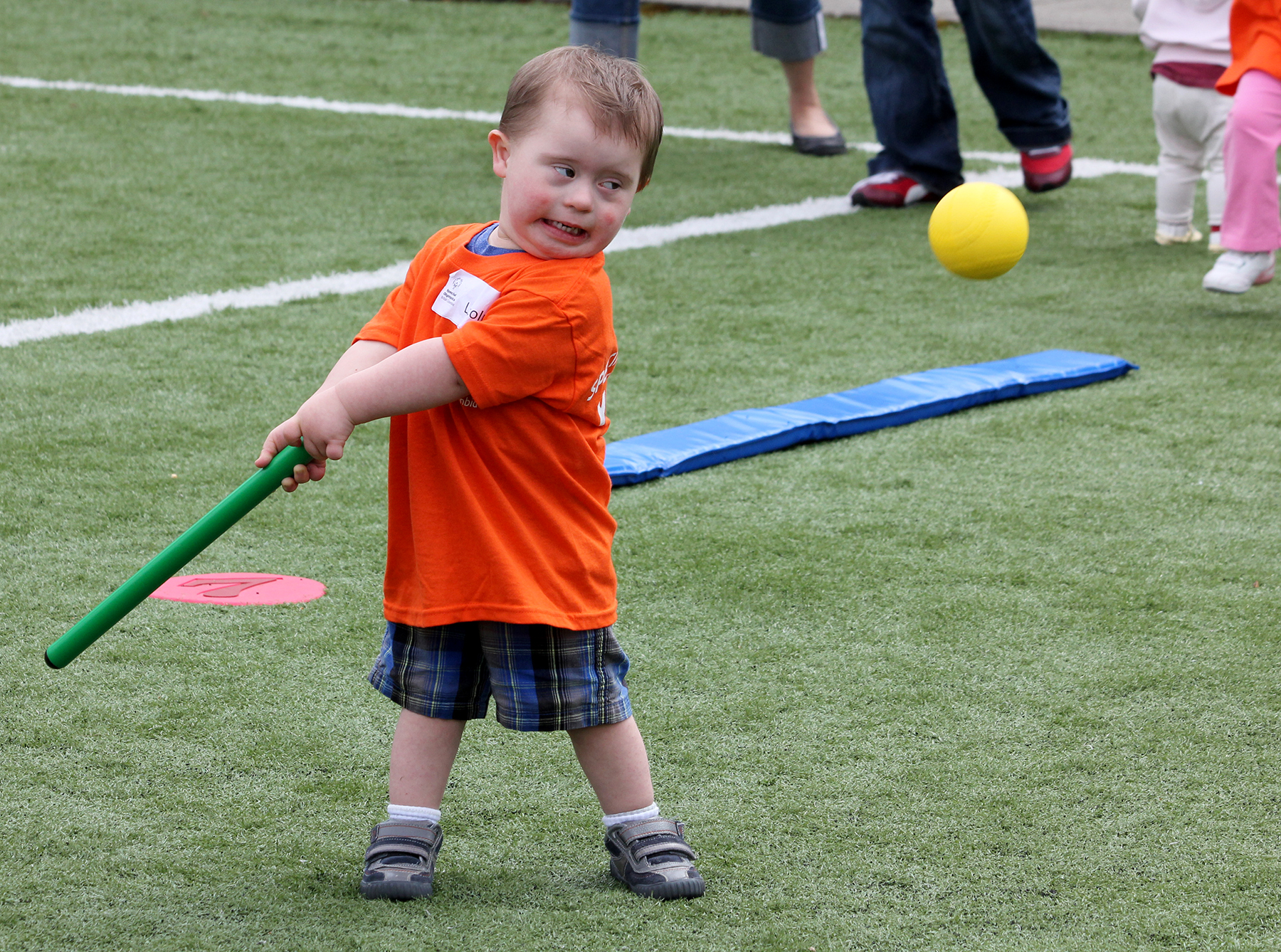
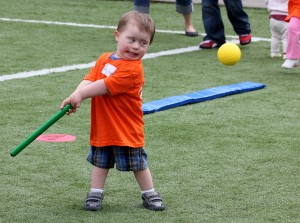
A child participates in SOBC’s Active Start program
Grace Tamkee looked on from the sidelines as her son ran across the gym. This was a typical exercise for him. Her 10-year-old son, who has Down Syndrome, struggles to run and fatigues easily. He’s been participating in Special Olympics BC programming since he was two years old, where he practices different skills such as running with a volunteer coach once a week.
But this day was different. For the first time, Grace’s son wasn’t the last one in his group to reach the end of the gym.
“The group is usually waiting for him,” says Grace, recalling the event. “But this time he actually wasn’t last. It was a proud mom moment for sure.”
It is well documented that children benefit from physical activity. But for children with neurodevelopmental disabilities, participating in these activities can be challenging. They’re often excluded for not being at the same level as their peers, which can limit their learning and development either further.
Many community-based physical activity programs like the one Grace’s son participates in exist across B.C. specifically for kids with neurodevelopmental disabilities. A team supported by Kids Brain Health Network (KBHN) has been studying the impact of several of these programs.
Most recently, in collaboration with Special Olympics BC (SOBC), the team has developed a new coaching approaching—concrete ways coaches can help children and families living with neurodevelopmental disabilities gain the most out of community-based physical activity programs—and are working on expanding its implementation.

Children practicing sports skills in SOBC’s FUNdamentals program
The project got its start back in 2012, when Dr. Jean-Paul Collet—senior investigator at B.C. Children’s Hospital Research Institute, and now team lead of the Physical Activity Programs to Enhance the Development of Children with Brain-based Disabilities and to Strengthen their Families—was invited to observe a community-based therapy class for children with neurodevelopmental disabilities.
With support from KBHN, Dr. Collet and his team started to study the impacts this type of physical activity programming was having on children and their families. A historical cohort study was done using data on 67 participants which determined that most children improved their motor function over time.
With continued funding from KBHN and BC Ministry of Health, Dr. Collet’s team expanded their research and started studying different community-based physical activity programs in BC, eventually forging a partnership with SOBC and extending their reach to over 50 sites across the province.
“We wanted to study the impact of the programs and the factors that can influence the operation of the programs and make them more or less successful,” says project co-lead Dr. Mojgan Gitimoghaddam. “It wasn’t to compare the programs to see if one was better than the other—it was to compare strategies, for example how is it different if it’s a group-based physical activity program versus one-on-one.”
As the study continued, the team started to identify gaps in the coaching process they felt could be improved relatively easily. This led them to develop a new physical activity coaching (NPAC) approach, which they’re now looking to implement to more Special Olympic sites across B.C. and Canada.
The NPAC approach was developed by working closely with SOBC coaches in five sites across the Lower Mainland. The team studied two motor development programs offered by SOBC: Active Start, for children ages two to six, and FUNdamentals, for children ages seven to eleven. Both programs require a child to have a diagnosed or suspected intellectual disability.
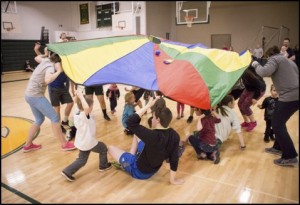
SOBC volunteer coaches lead children and their families through a parachute activity
“We discussed with the volunteer coaches about what could be best, and worked with them very closely,” says Dr. Collet. “When there was an idea that looked good, we’d test it with other sites and other coaches. It was a complete interaction for close to two years where we were identifying ideas and gaps from the parents and coaches.”
The NPAC approach has three main components. The first was the introduction of a motor assessment tool, which looks at 15 core motor skills including balance, throwing and skipping. The idea is to perform an evaluation of a child’s abilities at the start of the program and then continue to reassess them in order to adapt activities over time and highlight progress.
“Parents were saying that other than having those ah-ha moments—maybe they’re watching their child and instead of going up the stairs on their bum all of a sudden their child is walking stairs like every other child—they didn’t really have a bench mark to see if their child had improved at all,” says Lois McNary, Vice President of Sport for SOBC.
The second part centers around family engagement. Having a session once a week wasn’t necessarily enough to optimize results, so coaches started giving parents a list of activities they could practice with their child at home. The team also gave families access to a sports app which includes instructional videos and acts as a place for families to track their child’s progress.
The final component involves building a social network for parents, where they can chat with one another on the sports app and have monthly meet-ups.
The whole process of developing the NPAC, explains Dr. Mojgan Gitimoghaddam, involved constantly trying out new ideas and updating the approach based on parent and coach feedback. For example, initially coaches said the assessments were hard for them to complete because they weren’t written in simple language, so Dr. Gitimoghaddam and the team adjusted the tool.
The team also found parents were forgetting to practice at home but rectified this by simply having coaches remind parents about at-home practice at the end of each weekly session.
“This isn’t something where we as researchers just go in and experiment,” says Dr. Gitimoghaddam. “The goal is that SOBC will eventually fully take over because we want this approach to be fully sustainable. Sustainable is a big, big word here.”
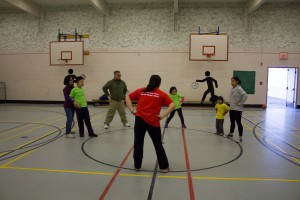
An SOBC volunteer coach lead children and their families through exercises
SOBC is planning to expand the NPAC approach to five additional sites in B.C. outside of the Lower Mainland starting in September. They’ve also reached out to their Special Olympic counterparts in Saskatchewan and P.E.I., who have shown interest in uptake of the project.
Dr. Collet and his team have also connected with a few schools in Vancouver and Surrey, and plan to start exploring ways the NPAC approach can be implemented.
“Rather than just going (into the schools) and saying we want to implement this, we will spend lots of time doing interviews and focus groups and surveys with parents and teachers to know what kind of programming exists,” says Dr. Gitimoghaddam. “We will tell them about our approach and then learn what parts we can use and which we can’t.”
The project has received additional funding from the BC Ministry of Health and the Michael Smith Foundation for Health Research to identify the best ways to implement physical activity programs in different communities and settings. Specifically, the team will be looking at Indigenous and rural populations in B.C., and have already partnered with Indigenous Sport, Physical Activity and Recreation Council.
For parents like Grace Tamkee, community-based physical activity programs can have a huge impact on their child’s life. Aside from seeing physical changes, Grace says her son has gained confidence and a willingness to participate in activities as a result of the SOBC program.
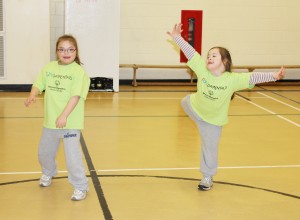
Two children participate in SOBC’s FUNdamentals program
As the team persists with the project, the goal will be to continue working closely with target communities to ensure any implemented approach is sustainable over time.
“I can imagine that things will look different when we go to the rural side and into Indigenous communities,” says Dr. Gitimoghaddam. “But that’s the beauty of this project—you find out what the best approach is for each context.”
Story by Vanessa Hrvatin